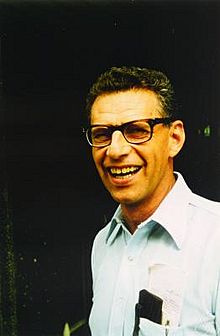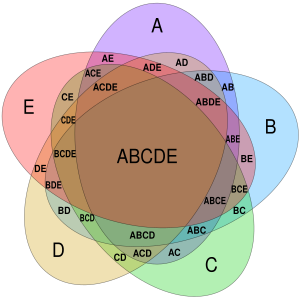Branko Grünbaum facts for kids
Quick facts for kids
Branko Grünbaum
|
|
|---|---|

Branko Grünbaum in 1975
|
|
| Born | 2 October 1929 |
| Died | 14 September 2018 (aged 88) Seattle, Washington, U.S.
|
| Nationality | Croatian American |
| Alma mater | Hebrew University of Jerusalem |
| Awards | Lester R. Ford Award (1976) Carl B. Allendoerfer Award (1978) Leroy P. Steele Prize (2005) |
| Scientific career | |
| Fields | Mathematics |
| Institutions | University of Washington |
| Thesis | On Some Properties of Minkowski Spaces (1957) |
| Doctoral advisor | Aryeh Dvoretzky |
| Doctoral students |
|
Branko Grünbaum (Hebrew: ברנקו גרונבאום; October 2, 1929 – September 14, 2018) was a famous mathematician. He was born in Croatia and later became a professor at the University of Washington in Seattle. He earned his Ph.D. in 1957 from the Hebrew University of Jerusalem in Israel.
Contents
Early Life and Education
Branko Grünbaum was born in Osijek, which was then part of the Kingdom of Yugoslavia, on October 2, 1929. His family faced challenges during World War II. They survived the Holocaust by staying at his Catholic grandmother's home.
After the war, as a high school student, he met Zdenka Bienenstock. She had also survived the war by hiding in a convent. Branko started studying at the University of Zagreb. However, he did not like the communist ideas in Yugoslavia. So, he applied to move to Israel. In 1949, he traveled with his family and Zdenka to Haifa.
Life in Israel and the US
In Israel, Branko found a job in Tel Aviv. But in 1950, he returned to studying mathematics at the Hebrew University of Jerusalem. He earned a master's degree in 1954. In the same year, he married Zdenka. She continued her studies in chemistry.
From 1955, he worked in the Israeli Air Force as an operations researcher. He and Zdenka had their first son in 1956. Branko finished his Ph.D. in 1957. His research was about convex geometry. His advisor was Aryeh Dvoretzky.
After his military service ended in 1958, Branko and his family moved to the United States. Branko became a researcher at the Institute for Advanced Study. In 1960, he became a visiting researcher at the University of Washington. He planned to return to Israel as a lecturer. However, his plans changed due to some issues with his marriage in Israel. He and Zdenka remarried in Seattle before their planned return.
Branko stayed connected with the Hebrew University until 1966. During this time, he made long research visits to the University of Washington. He also visited Michigan State University in 1965–1966. While in Michigan, he and Zdenka decided to stay in the U.S. instead of returning to Israel. Branko became a full professor at the University of Washington in 1966. He worked there until he retired in 2001.
Mathematical Discoveries
Branko Grünbaum wrote over 200 papers, mostly about discrete geometry. This is a field of mathematics that studies shapes and patterns. He was known for his work on classification theorems. He also wrote about abstract polyhedra, which are like generalized shapes with flat faces.
His work on line arrangements may have inspired ideas about quasiperiodic tilings. A famous example of this is the Penrose tiling. This type of tiling uses shapes that do not repeat in a regular pattern.
Grünbaum also created a special way to draw Venn diagrams for more than three sets. These diagrams use overlapping circles to show how different groups of things relate to each other. He was also an editor and often wrote for the math journal Geombinatorics.
Important Books and Awards
Grünbaum's book Convex Polytopes, first published in 1967, became a very important textbook. It is still used to teach about these geometric shapes. He also wrote Tilings and Patterns with G. C. Shephard. This book helped bring new interest to the study of patterns and designs. It was popular with both mathematicians and people who just enjoy patterns.
In 1976, Grünbaum won a Lester R. Ford Award for his article about Venn diagrams. In 2004, a special issue of the journal Discrete and Computational Geometry was published in his honor. In 2005, he received the Leroy P. Steele Prize for Mathematical Exposition. This award is given for excellent writing in mathematics.
He was also a Guggenheim Fellow. This is a special award given to people who have shown outstanding ability in their field. In 2012, he became a fellow of the American Mathematical Society. Branko Grünbaum guided 19 students through their Ph.D. studies. He has many "mathematical descendants" who continue his work.
See also
 In Spanish: Branko Grünbaum para niños
In Spanish: Branko Grünbaum para niños
- Configuration (geometry)
- Convex uniform honeycomb
- Elongated square gyrobicupola
- Goldner–Harary graph
- Pentagram map
- Simplicial sphere
- Star coloring
- Star polygon
- Grünbaum's theorem
- Grünbaum–Rigby configuration


